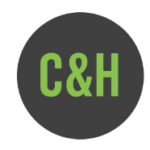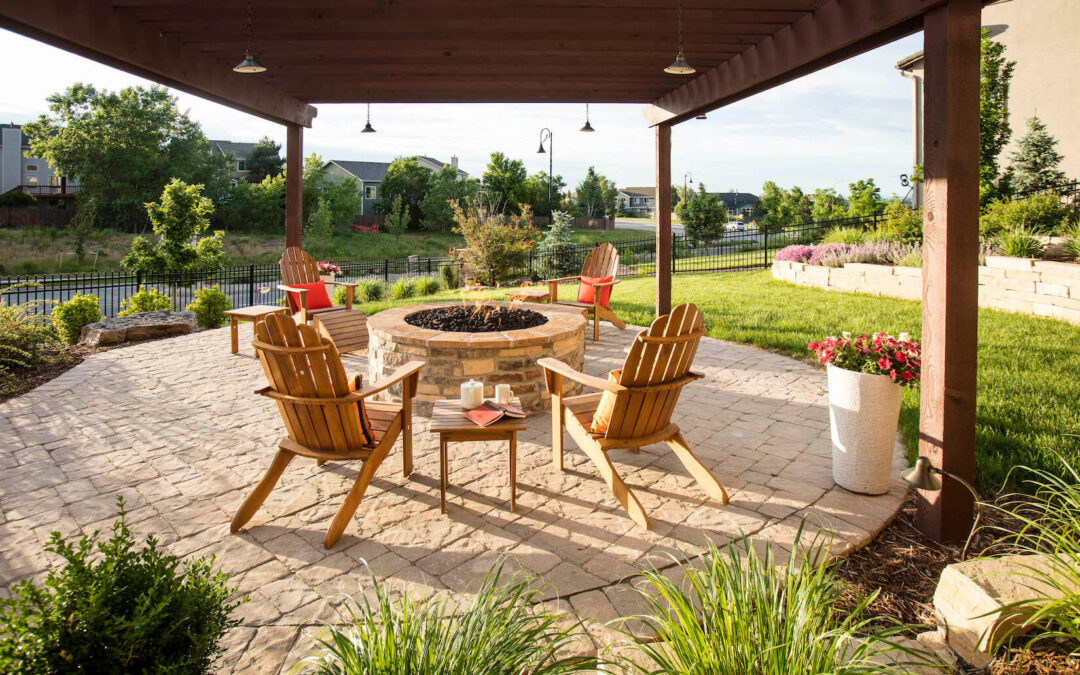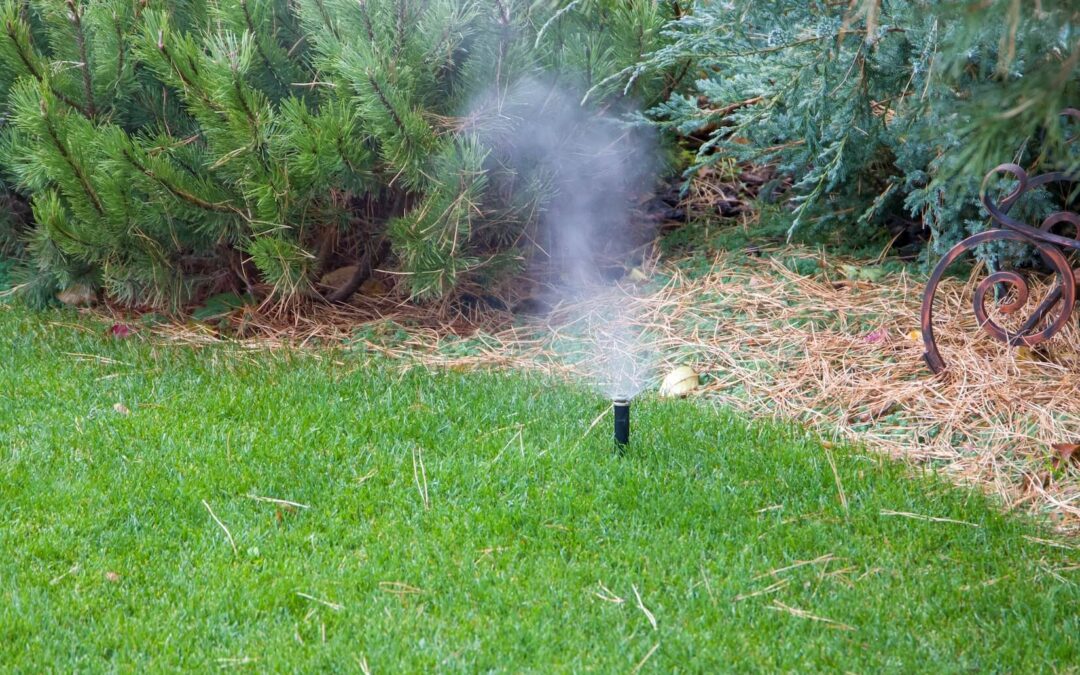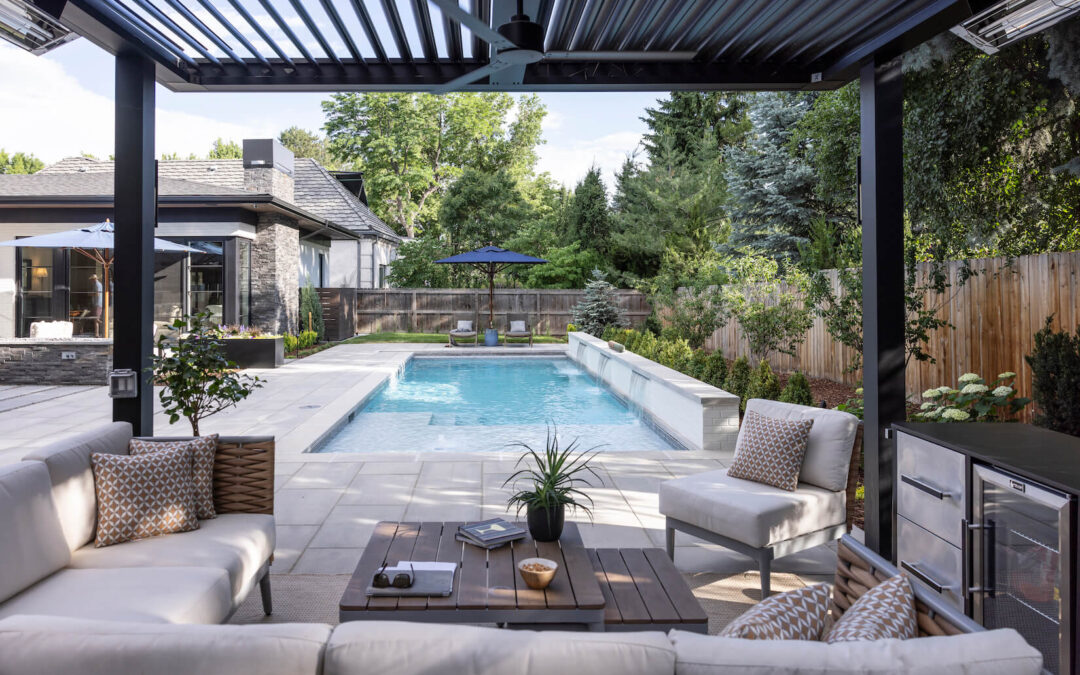Denver is a city that thrives in the summer. People love spending time outdoors, whether it’s going on a hike or spending time with friends on an outdoor patio. If you spend a lot of time in your backyard grilling, having a drink, or just relaxing, you need a landscape that is well-maintained and beautiful. Xeriscaping, hardscaping, and softscaping are ideal for Colorado landscapes, but before you go out and transform your backyard, you should understand the difference between xeriscaping, hardscaping, and softscaping.
Each approach offers unique benefits and suits different environments, especially in the variable climate of central Colorado. Let’s dive into what each type is and how they can transform your outdoor space.
What is Xeriscaping?
Xeriscaping is all about water conservation. This landscaping method uses drought-resistant plants, efficient irrigation, and mulch to minimize water use. It’s a great way to create a beautiful, sustainable garden that thrives with minimal water. Xeriscaping often incorporates native plants that are well-adapted to the local climate, reducing the need for extensive maintenance. Xeriscaping is a smart approach to landscape design that works exceptionally well in places where water is limited. Xeriscaping refers to a dry and arid landscape. The idea is to use native vegetation and plant life that doesn’t need much watering. It’s also great for urban areas — yards that use less water help reduce runoff into waterways and even reduce energy use from sprinklers and cooling systems. Xeriscaping also helps hold in moisture, limits soil movement, and supports biodiversity by creating habitat for local wildlife. It’s a good example of how a simple design choice can make a big difference for the environment and humans.
What is Hardscaping?
Hardscaping involves the use of non-plant elements in your landscape design. Think patios, pathways, retaining walls, and decorative stones. These features add structure and functionality to your outdoor space. Hardscaping can create outdoor living areas, manage erosion, and provide a way for homeowners to enjoy their whole yard.
Hardscaping is all about building structure into your yard using elements like stone, concrete, and gravel. It includes walkways, driveways, and retaining walls — anything that isn’t living but still adds purpose and polish. These hardscape materials hold up over time, help prevent soil movement, and create practical and inviting spaces.
What is Softscaping?
Softscaping, on the other hand, focuses on the living elements of your landscape — trees, shrubs, flowers, and grass. Additionally, softscaping can also include decorative rock and ground covers, which can add a lot to a landscape. The softscaping approach creates lush, green spaces that can range from manicured lawns to wild, natural gardens. Softscaping is all about choosing the right plants to create an aesthetically pleasing and environmentally friendly garden.
Softscaping is all the living things — trees, shrubs, flowers, and the overall plant life that makes a yard feel alive. In urban areas, softscape elements help cool things down, hold moisture in the soil, and even clean the air a bit. Plus, adding the right plants can support biodiversity and create small pockets of habitat for bees, birds, and other helpful visitors without needing large amounts of water.
Key Differences and Best Uses
Water Use and Maintenance
- Xeriscaping: Ideal for areas with water restrictions or for homeowners looking to reduce water bills. Low maintenance once established.
- Hardscaping: Virtually no water use, making it perfect for dry climates. Requires minimal maintenance.
- Softscaping: Can be water-intensive, depending on plant choices. Requires regular maintenance like watering, pruning, and fertilizing.
Aesthetic and Functional Use
- Xeriscaping: Offers a natural, rugged beauty focusing on texture and color from plants and rocks.
- Hardscaping: Provides a clean, organized look with functional spaces for outdoor activities.
- Softscaping: Creates a vibrant, lush garden with various colors and textures from plants.
Choosing the Best Fit for Central Colorado
In the central Colorado region where Denver is located, the climate is semi-arid, with hot summers and very cold winters. Precipitation is relatively low in the spring and summer, which makes it hard for some plants, such as those that prefer wet climates, to grow properly. Water conservation is a priority in Denver and surrounding areas. As a result, it’s recommended that homeowners opt for landscapes that use native, drought-tolerant plants — well-adapted plants that are non-invasive and thrive in this climate are also great — and install smart irrigation systems that conserve water. Whether you’re thinking of xeriscaping, hardscaping, or softscaping, each will be beneficial in the semi-arid climate of the Denver metro area.
- Xeriscaping: A top choice for central Colorado due to its water efficiency. Native plants like yarrow, blue grama grass, and Rocky Mountain penstemon thrive here. Xeriscaping reduces the stress on water supplies and ensures your garden remains vibrant even during droughts. In some areas of the Denver metro, you may even get reimbursed by the local municipality for switching to a drought-tolerant landscape, though that varies depending on your location.
- Hardscaping: These aesthetically pleasing landscapes are excellent for creating functional outdoor spaces that can withstand Colorado’s temperature extremes. Stone patios and pathways require little to no water and offer year-round usability. Incorporating hardscape elements can also help manage erosion on slopes common in this area.
- Softscaping: While these landscapes require more maintenance, they can be successful with the right plant selections and irrigation strategies. Choose native or well-adapted plants and consider incorporating smart irrigation systems to minimize water use. Softscaping can add lush greenery and colorful blooms, creating a welcoming environment.
Making the Right Choice
Ultimately, the best landscape for your home in central Colorado depends on your personal preferences, environmental goals, and maintenance capacity. Xeriscaping is ideal for sustainability and low water use, hardscaping for functionality and minimal upkeep, and softscaping for lush, vibrant gardens.
By understanding these landscaping methods and their reactions to the local climate, you can create a beautiful, functional, and sustainable outdoor space that suits your lifestyle and the unique conditions of central Colorado. Happy gardening!
High-End Landscaping Near You in the Denver Metro
Ready to transform your backyard into a stunning oasis? Our team at C&H Landscaping specializes in designing and implementing all three landscaping methods, ensuring your outdoor space is not only beautiful but also sustainable and suited to the central Colorado climate. Contact us today to schedule a consultation, and let us help you create the perfect landscape for your home.
At C&H Landscaping, our mission is to transform everyday outdoor spaces into something extraordinary with creative designs and top-notch craftsmanship. Expert Denver landscaping services from custom design to professional installation. We offer tailored solutions that enhance curb appeal, increase property value, and bring your vision to life.







